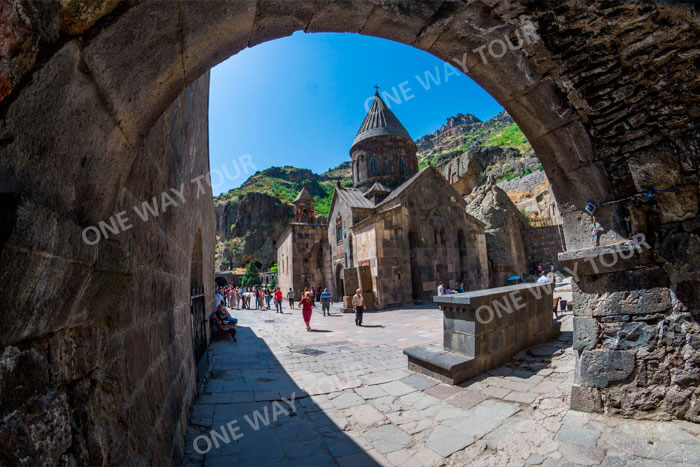Garni Temple is the only pagan monument preserved on the territory of Armenia. It is located on the edge of the gorge from where a visitor can enjoy a stunning view of the majestic mountains. The temple is dedicated to Mithra, the pagan god of the Sun. The ornaments decorating the top of the architectural monument amaze with their beauty and complexity. The place was very appreciated by Armenian kings for inaccessibility and excellent climate, so as a result this territory became their summer residence. The whole complex consists of a Roman bath, a royal summer palace and a 7th-century church. The Roman bath contains a mosaic, which is crafted from fifteen different colours of natural stones. In 2011 UNESCO awarded the Museum-Reservation of Garni the Melina Mercouri International Prize.
The well-established transport infrastructure of Armenia allows to get to Garni temple by a private car or with the help of various travel companies which offer regular excursions and tours to different sights of the country. Due to the geographical location of Garni temple the trip will not seem long.
The high season in Armenia lasts for a long time due to the pleasant climate conditions. Warm days in Armenia start in March and last until late autumn; winter is usually snowless and not long. The high precipitation season is variable. The tourist season for Garni temple depends on the weather conditions.
The temple is commonly attributed to Mihr, the sun god in the Zoroastrian-influenced Armenian mythology and the equivalent of Mithra. Tiridates, like other Armenian monarchs, considered Mihr their patron. Some scholars have argued that, given the historical context during which the temple was built, i.e. after returning from Rome as king, it would seem natural that Tiridates dedicated the temple to his patron god. Furthermore, white marble sculptures of bull hooves have been discovered some 20 metres (66 ft) from the temple which could possibly be the remains of a sculpture of the god Mihr, who was often portrayed in a fight with a bull.
The study of some fragments discovered during excavations in Garni led to the conclusion that after the adoption of Christianity the pagan temple was rebuilt, and in its place, the church was founded. Alexander Sahinyan did not agree with that. According to him, the church was, but it was built on the western side of the ancient temple. The church with four apses was built in the 7th century, the ruins of which are still in the same place.
According to the manuscripts of the 14th century, the Garni temple was founded in 2166 BC. For the first time about the temple mentioned the ancient Roman historian Tacitus, using the name "Gornea". Historian Movses Khorenatsi, accepting the legend about Hayk, the ancestor of all Armenians, attributed the construction of Garni temple to Gegham (the great-grandson of the ancestor Hayk), who had a grandson named Garnik, after whom Garni temple was named.
GEGHARD MONASTERY
10 km

GARNI GORGE, SYMPHONY OF THE STONES
10 km

CHARENTS ARCH
15 km
